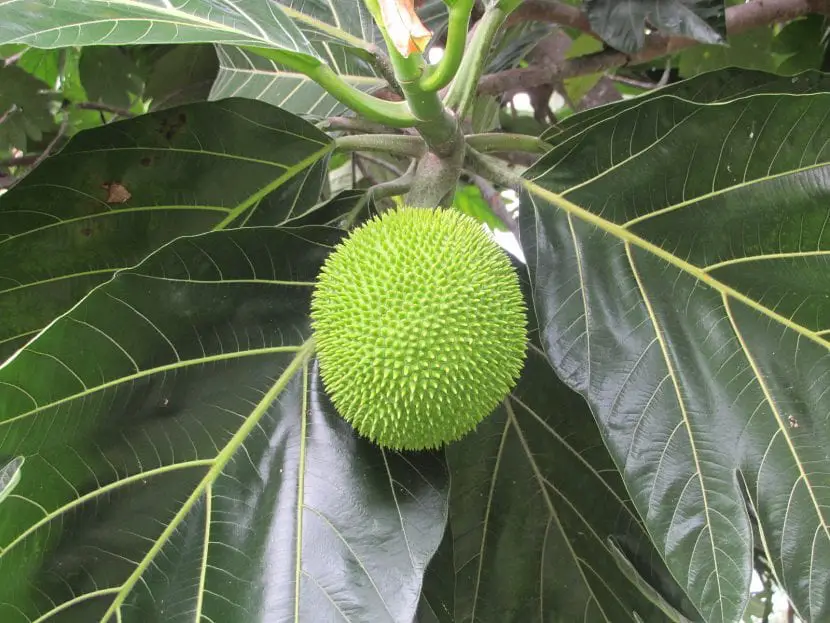

The breadfruit tree or frutipan is a tropical plant that we can find in all the hot and humid regions of the world. Although it can easily exceed 10 meters, specimens of 21m have even been seen, its cultivation in a pot is possible since it tolerates pruning quite well.
Let’s meet this curious and beautiful tree, so rare in temperate climates.
Origin and characteristics of the breadfruit tree


Our protagonist It is an evergreen tree native to the Pacific islands that can reach a maximum height of 21mwhose scientific name is Artocarpus altilis. Its trunk often branches from the base, and has a maximum thickness of 2m in diameter. The flowers are grouped in inflorescences, female and male, present in the same specimen. Pollination is cross, but it is not necessary for the fruit to form, which is round and can weigh between 9 and 20 kilos.
Its growth rate is quite fastbeing able to grow at a rate of one meter per year if the conditions are suitable. Also, you have to know that inside there is a latex that causes itching and irritation on contact with the skin.
What are their cares?


If you want to have a copy, we recommend that you provide it with the following care:
- Weather: no frost.
- Location: outside, in semi-shade.
- Earth:
- Pot: universal growing substrate mixed with 30% perlite.
- Garden: it must have good drainage and be rich in organic matter.
- Irrigation: frequent. Every 2 days in the hottest season and every 5 days the rest.
- Subscriber: once a month add organic fertilizers, such as guano o manure.
- Pruning: remove dead, diseased or weak branches and those that have grown too long before growth resumes in spring.
- Multiplication: by seeds in spring.
- Harvest: The fruits are ready to be picked when they turn light green and look large, about 15-19 weeks after flowering.
- Rusticity: supports up to 5ºC, being adequate between 38 and 16ºC.
Did you know this tree?
